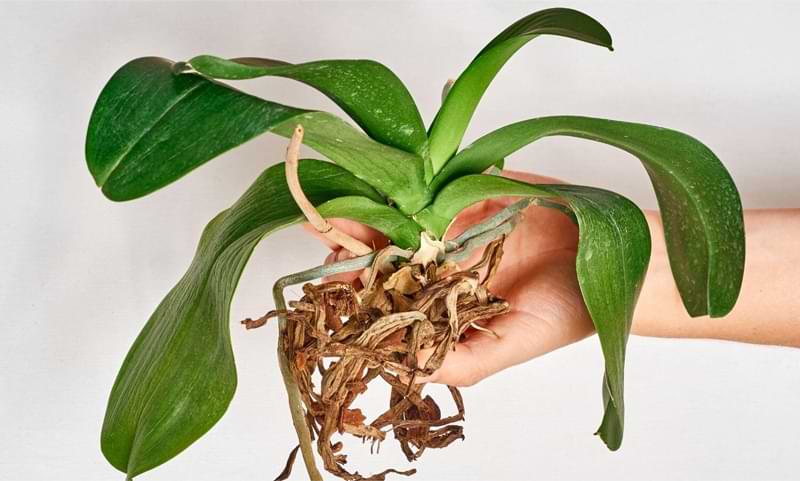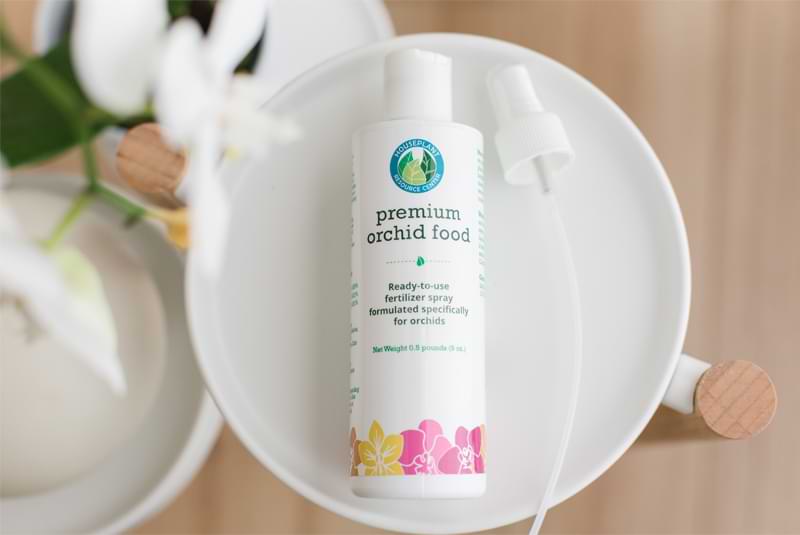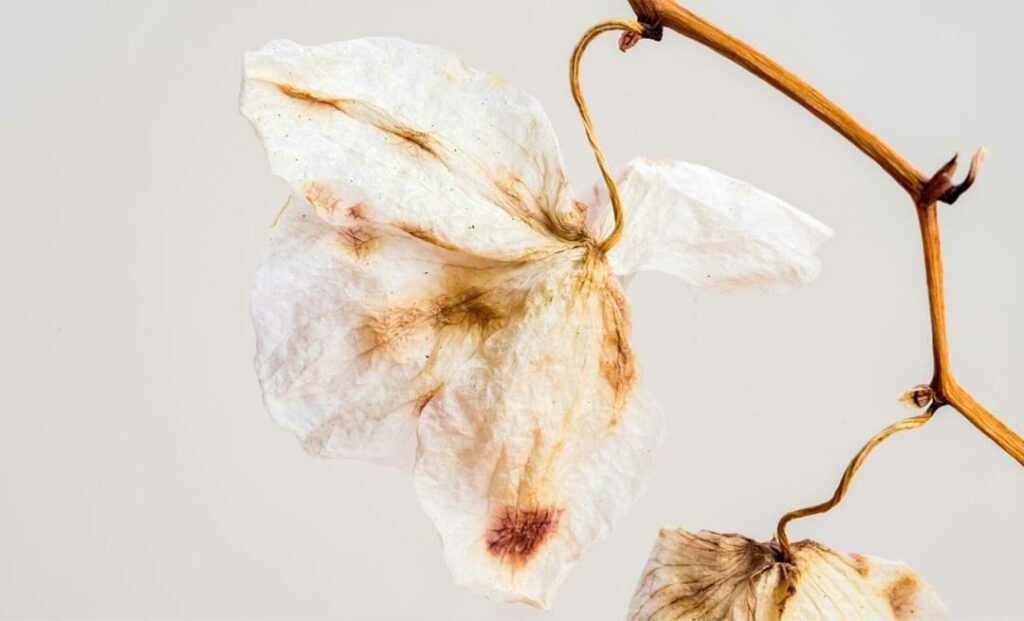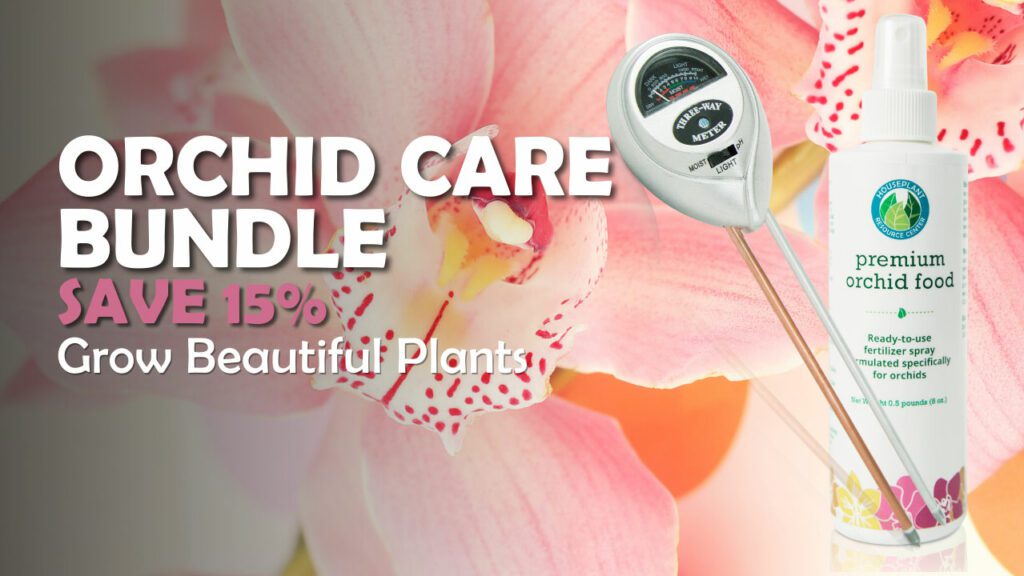Orchids are beautiful plants that may require different care than the rest of your traditional houseplants. For this reason, many beginner orchid growers may be wondering if their orchids are showing signs of distress or if their plants are dying.
Fortunately, your orchid will exhibit a few telltale signs that something’s wrong before it’s too late to save the plant.
Let’s dive into the 5 biggest indicators that your plant needs your attention so you’ll be prepared to care for your orchid if it’s showing signs that it’s unwell.
Sign #1 Your Orchid Is Dying: An Unpleasant Smell Around Your Plant
Orchids thrive in environments with high humidity, but, unfortunately, high-humidity environments often encourage the spread of fungal and bacterial diseases. If you notice a strange fishy smell around your plant, chances are it has developed a bacterial infection.
It’s important to note that bacterial diseases and fungal diseases should be treated differently. Bacterial infections should be removed from the plant with a pair of sterile, sharp shears. While the orchid will typically recover quickly once the bacterial infection is removed, it’s important to act quickly since bacterial diseases can spread and kill your orchid within a matter of weeks.
Professional Tip: To treat fungal diseases in orchids, try sprinkling cinnamon on the infected area or using a fungicide to clear up the infection.

Sign #2 Your Orchid Is Dying: Yellowing Leaves
The state of your orchid’s leaves can tell you a lot about your plant’s health. Typically, healthy orchids boast thick, hearty leaves that appear deep green. If you notice your orchid’s leaves turning yellow, it’s a sure sign your plant is distressed.
Yellowing or listless leaves can be a sign of stem rot, a fungal infection caused by standing water in your orchid’s pot. Infections of this kind can be fatal, so be sure to act quickly before the stem rot continues to spread.
Professional Tip: In addition to stem rot, overwatering can cause yellow leaves. If, upon inspection, it isn’t clear your orchid has stem rot, pause your watering routine to see if the plant’s leaves return to their natural green state.
Sign #3 Your Orchid Is Dying: Spots on Your Orchid’s Leaves
In some orchid species, spotted leaves and blooms are natural, but in many orchid species, leaf spotting is a sign of sunburn, infection, or a pest infestation.
Once the leaf is damaged, it won’t recover. The best course of action is to remove the spotted leaf to encourage new, healthy ones to grow in its place.
Professional Tip: If your orchid is positioned in a south-facing windowsill or in the line of direct sunlight, leaf spots could indicate sunburn. To save your orchid, simply move it to a spot where it gets bright, indirect sunlight or hang a sheer curtain between your plant and the window to diffuse direct rays.

Sign #4 Your Orchid Is Dying: Consistently Droopy Leaves
Droopy leaves are a sign your orchid needs immediate attention; otherwise, it may soon be too late to save the plant.
In most plants, drooping leaves indicate dehydration, but in orchids, drooping leaves can indicate root rot, a condition that causes root damage and affects the plant’s ability to absorb vital nutrients to survive.
To avoid root issues that can easily lead to plant death, avoid overwatering your orchid and be sure to use an orchid potting mix that encourages water runoff.
Professional Tip: If your orchid’s leaves don’t perk up after a thorough watering, it’s likely suffering from damaged roots or root rot.
Sign #5 Your Orchid Is Dying: Brown or Mushy Roots
When you notice mushy roots, it’s time to pause your watering routine, trim off the mushy root section, and repot your plant in a well-draining orchid potting mix to encourage new, healthy growth.
The key to preventing root damage is to use an orchid potting mix that is well-draining and quick-drying. If the orchid mix is too dense, it encourages water retention, which can lead to root rot.
To save the dying orchid, remove it from its pot and cut away all the dead and dying roots, apply our Root Supplement to encourage hearty root growth, and repot your plant in fresh orchid potting mix.
Professional Tip: Another common cause of brown or mushy roots is poor root ventilation. Consider repotting your orchid to a pot with plenty of aeration holes to encourage air to find its way to the roots through the potting mix.

A Recap: 5 Key Warning Signs That Your Orchid Is Dying
You’ve learned the 5 signs your orchid may be dying. Here’s a recap so you can tackle those warning signs and start nursing your sick orchid back to its beautiful, healthy state.
- Sign #1: An unpleasant smell around your orchid likely indicates the plant is suffering from a bacterial infection.
- Sign #2: Yellowing leaves is a good sign that your plant is overwatered and has root rot.
- Sign #3: Spotted leaves can be a warning that your plant is getting too much sun or has succumbed to a pest infestation.
- Sign #4: Droopy leaves often mean your plant is dehydrated or has root damage and can’t absorb vital nutrients to survive.
- Sign #5: Brown or mushy roots often point to poor root ventilation or overwatering, which encourages bacterial growth and root decomposition.
For additional info on how to save your orchid if it’s suffering from these signs, see “How to Revive Your Dying Orchid in 5 Quick Steps.“

To Prevent Your Orchid From Dying, Use Premium Orchid Food
The best way to prevent your orchid from falling ill, suffering from rot or disease, or succumbing to a pest infestation, is to keep it healthy by providing it with nutrient-rich orchid fertilizer.
The right orchid fertilizer will be specifically formulated for your plant’s unique needs and gentle enough so that you won’t risk damaging your orchid.
Use Premium Orchid Food to nourish your orchid with an easy-to-use spray formula. Simply spray the Orchid Food on your orchid’s leaves, roots, and potting mix every time you water. Then sit back and watch your plant bloom.
Professional Tip: Avoid traditional garden fertilizers since they’ll burn your orchid’s delicate inner systems.



